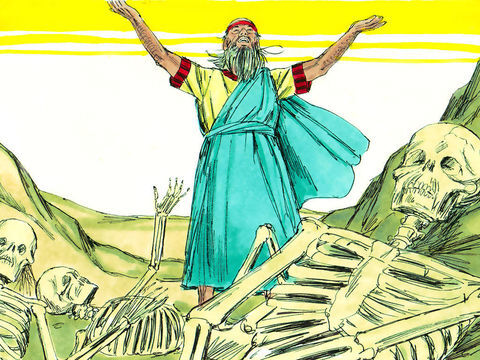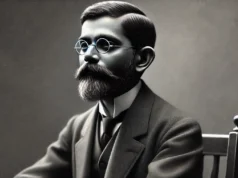
The Breath of God is one of the significant themes in the Bible and finds its expression in different ways. I believe the breath of God is an appropriate theme to reflect, particularly in the context of our tryst with COVID 19.
1. Breath of God – The Life-Giving Spirit (Genesis 2:4-9)
Genesis 2 is one of the captivating chapters in the Old Testament. It narrates how the first man – Adam came into existence by the creative work of God. Among the many aspects mentioned in the process of creation of man, the most significant aspect is the final element – “breath of life” – God has breathed into the nostrils of the first man which transformed him into a living being with life-giving spirit.
Verse 7 reads, “And the LORD God formed man of the dust of the ground, breathed into his nostrils the breath of life and man became a living soul.”
If we visualize and re-imagine this event, we can see God, as a skilled potter or an innovative sculptor. God forms a human-like figure in accordance with His imagination and “in His image and likeness.” (Genesis 1: 27)
The figure made ‘out of the dust of the earth’ was only an immovable mud-statue. The second part of the verse also depicts the work of the LORD God which brought forth life into this immovable figure.
The LORD God now breathes/respires into the nostrils of the mud-image the “breath of life” (nishmath chaiyim) – and this mud-image has become an incredible living-being (nefesh chayyah) and God’s imagination was absolutely materialized.
The “breath of life” transformed the figure made out of dust from a lifeless collection of matter into a living creature or soul. Unimaginable! What a spectacular narration of innovative creation of humankind!
Here, the creation narrative reveals three significant things:
- Firstly, man or humankind is a compound being – he is a combination of dust and spirit/soul;
- Secondly, the first man (Adam) represents the whole human race – he shares his identity with the entire humanity and
- Thirdly, the LORD God breathed the life-giving spirit – and it signifies that the entire humanity shares the “breath of life” breathed by God.
Sharing the identity with the first man – God has instilled in us the breath of life. This life-giving Spirit is given to us in order to celebrate life and to resist and transform all life-destroying forces. By nature, God has instilled in us the Spirit of life – the life-giving Spirit.
In the context of uncertainty that prevails everywhere, we need to remind ourselves that we are filled with the Spirit of life. Furthermore, we need to be aware that we are entrusted with the task of dynamic transformation that can begin from us and extend to the entire creation.
2. Breath of God – The Life-Transforming Spirit (Ezekiel 27:1-14)
Secondly, there is another fascinating passage in the prophetic book of Ezekiel 37 that deals with the breath of God. This chapter describes God transporting Ezekiel—probably not literally, but in a vision—to a valley full of dry bones and directing him to speak to the bones.
Ezekiel was to speak to the bones and tell them that God would make “breath” enter the bones and they would come to life, just as in the creation of man when He breathed life into Adam (Genesis 2:7). Ezekiel obeyed. The bones came together, flesh developed, skin covered the flesh, breath entered the bodies, and they stood up as a vast army.
This vision symbolized the whole house of Israel that was then in captivity. Like unburied skeletons, the people were in a state of living death, pining away with no end to their judgment in sight. They thought their hope was gone and they were cut off forever.
The reviving of the dry bones signified God’s plan for Israel’s future restoration. The vision showed that Israel’s new life depended on God’s power and not the circumstances of the people. The breathing of God’s Spirit into the bones showed that God would not only restore them physically but also spiritually.
The Hebrew word for breath that is used here (Spirit or wind) is the same word that appears in the book of Genesis 1:2: “The earth was a formless void and darkness covered the face of the deep, while a wind from God or the spirit of God swept over the face of the waters”. In both contexts, God’s Spirit appears amidst confusion, uncertainty, and hopelessness.
3. The Breath of God – Life-Renewing Spirit
Thirdly, another remarkable passage which talks about the “breath of God” is found in the gospel according to John 20:21-23: 21. Jesus said to His disciples, “Peace be with you. As the Father has sent me, so I send you.” (v22).
When He had said this, He breathed on them and said to them, “Receive the Holy Spirit” (v23). This act of Jesus has been understood in different ways.
- One view is that Jesus was promising the disciples that the Holy Spirit would come at a later time, which turned out to be the Day of Pentecost (Acts 2).
- Another view is that it was a full outpouring of the Holy Spirit on the apostles prior to Pentecost
- The third view is that the giving of the Holy Spirit was an act of recreation. Just as God breathed physical life into Adam, Jesus breathed spiritual life into His disciples.
The act of Jesus has to be understood against the background of this chapter. John 20: 19 says, “the doors of the house where the disciples had met were locked for fear of Jews”. The disciples were surrounded by fear and ambiguity. They felt that their life had come to an end after the death of Jesus Christ. They forgot what Jesus had promised them.
Jesus came and stood among them and said “Peace be with you.” The disciples rejoiced when they saw the Lord. Verse 22 in particular discloses three aspects. Firstly, Jesus breathed on them (enephysēsen) and said, “receive the Holy Spirit” (Labete pneuma agion). Jesus’ action of blowing or breathing is directly associated with Genesis 2 where God breathed the breath of life into the nostrils of the man and made him a living soul/being.
It was a symbol, pledge or confirmation of what they were going to receive on the day of Pentecost. Jesus’ action here offers new-life or renewal of life and peace in the context of fear and confusion.
In the context of uncertainty, let us be reminded that God has instilled His breath in us the life-giving Spirit. He can change any situation – the dry bones can receive life through His Spirit. He comforts us with His spirit of renewal. Moreover, God is inviting us to breathe His breath in this world in order to bring the chaotic condition to order. In a world filled with hate, we are called to breathe the breath of love.
Dr. Aravind Jeyakumar Moniraj is serving as the Associate Professor and HOD, Department of Old Testament at Gurukul Lutheran Theological College and Research Institute in Chennai.
Photo contributed by Sweet Publishing









